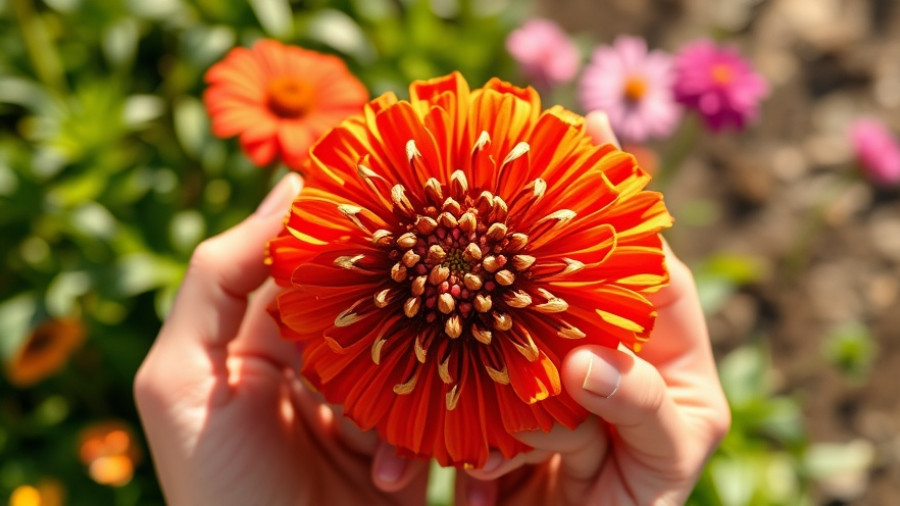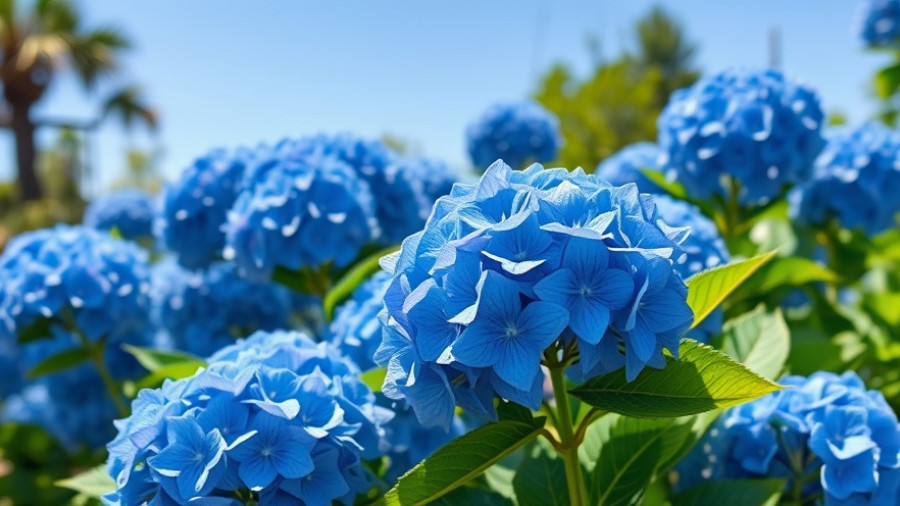
Welcome Spring with Stunning Potted Bulbs
As the vibrant hues of fall envelop our surroundings, it’s essential to channel that energy into something awe-inspiring for the spring. Planting bulbs in containers is a delightful way to ensure that cheer arrives in full bloom when the world awakens from its winter slumber (source). With the right techniques, your containers will burst with color, transforming your outdoor spaces into a floral masterpiece. Whether it's for holiday displays or simply to jazz up your garden, potted bulbs create eye-catching arrangements that are sure to impress.
The Timing is Now: When to Plant
To achieve those beautiful spring blooms, timing is everything. Local gardening experts advise that fall is the prime season for planting bulbs. This is when these beauties can dig their roots deep, establishing a strong foundation before the temperature dips (source). Aim for planting about six weeks before the ground freezes—this is typically around late September to early October for northern climates, while southern areas may plant as late as December. For instance, well-chilled bulbs like tulips, daffodils, and hyacinths thrive with proper planting care, ensuring they blossom in the vibrant tapestry of spring.
Choosing the Right Bulbs for Container Planting
When selecting bulbs, quality prevails over quantity. Look for firm, plump bulbs devoid of soft spots, as these are more likely to flourish. Bulbs such as crocuses, daffodils, hyacinths, and tulips deliver breathtaking results depending on your aesthetic goals. By pairing together varieties with overlapping bloom times, you can create an ongoing show of color that will last throughout the season (source). Consider also experimenting with pre-chilled bulbs in warmer climates, which could yield an abundance of blossoms even in less-than-ideal weather conditions.
Materials That Make a Difference
Successful container gardening hinges on the right materials. Ensure your pots have adequate drainage holes—this is vital for your bulbs' survival. Soil choice is equally crucial; choose a lightweight, well-draining potting mix to support your bulbs as they grow (source). Remember, a happy bulb results in a happy bloom!
Designing Your Beautiful Display
The art of potted bulb design is a thrilling opportunity for creativity. You can mix bulbs of different heights and colors, or even create delightful textures using various materials like gravel and pebbles. Start with larger bulbs in the center, surrounded by smaller ones, or layer them for a cascading effect that mimics a natural flower bed. Don’t shy away from pairing your blooms with winter-hardy plants like pansies or heathers to add color until your bulbs bloom (source).
Actionable Tips for Successful Bulb Planting
To ensure your bulb gardening experience is as rewarding as possible, here are some practical insights:
- Water well after planting: This helps settle the soil and nourishes the bulbs.
- Use a slow-release fertilizer: Adding this during planting will give your bulbs an essential boost as they establish themselves.
- Protect your bulbs: If your area is prone to squirrels or other critters, consider using chicken wire or netting to thwart their efforts!
Celebrate the Beauty of Gardening
As we head into the cooler months, remember that your summer spaces can still shine brightly with anticipation for spring. Gardening is a wonderful way to show love for nature, and by planting bulbs, you are contributing to a more colorful world. Why not gather some friends and start a fun bulb-planting party? Not only is gardening rewarding, but it can also strengthen community bonds through shared experiences, stories, and laughter.
Ready to embrace the beauty of spring blooms? Now is the perfect time to start planning your potted bulb display. Remember, every delightful bloom you plant now will reward you with joy down the road. Get your hands a little dirty, and let’s create something beautiful together!
 Add Row
Add Row  Add
Add 




Write A Comment